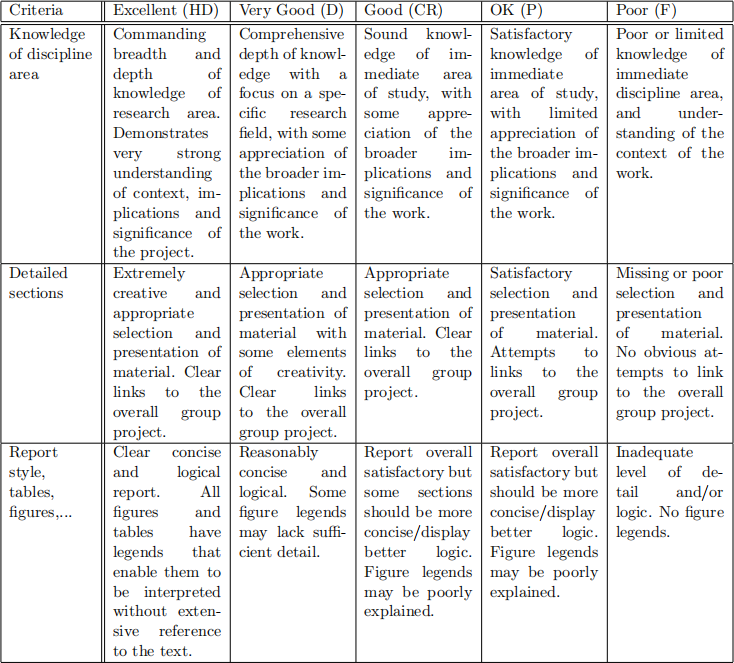MATH3888 Interdisciplinary Project Unit
Hello, dear friend, you can consult us at any time if you have any questions, add WeChat: daixieit
MATH3888
Semester 2
Interdisciplinary Project Unit
2021
INDIVIDUAL PROJECT REPORT GUIDELINES (STREAM 1 & 2)
Submission: As outlined in the course information, you will create your final individual report using the (maths) editing software LaTeX:
https://en.wikibooks.org/wiki/LaTeX
You are encouraged to use Overleaf to create your LaTeX report which you can access via your browser through your University of Sydney account:
https://www.overleaf.com
Use the following basic setup for your LaTex file:
Constraints:
- The final submitted pdf document shall consist of no more than 10 pages including figures and tables, but not including references and appendices.
- Include only ‘key’ figures/tables/schematics in the main body of the report (max = 8). Complex fig-ures/tables or detailed methodologies can be reported in Appendices.
- The ‘fontsize’ is strictly 11 points and the margins of the document are automatically set by the ‘full-page’ package as instructed above. (The other package (‘amsmath’) might be needed for the mathematical editing. Add any other packages, if needed.)
Part of your task is to determine how best to present the information and your scientific argument. Think of the 3Cs:
● Considered: have you considered all aspects of the project?
● Constructed: is your report well constructed (structured)? Have you used diagrams/figures/maths & computational tools appropriately to convey your information?
● Concise: being concise brings clarity. Is your report accurate and easy to read?
GUIDELINES FOR THE STRUCTURE OF YOUR REPORT
Please use the following headings (you can add subheadings):
Title
Succinct description of your project (ideally should fit on a line or two at most)
1. Introduction
This should be a general introduction to the overall project covering the relevant literature (refrain from citing material you found on the web; restrict to standard text books and original literature in peer-reviewed journals). Once you have provided the background and stated the problem or question under study, explain the purpose of your study. Include at the end of your Introduction a clear and exact statement of your study aims.
2. Methods
This section provides the details of how you conducted your study. You should focus on reporting the discipline-specific (aka maths) aspects of the research. This must include aspects of mathematical theory and numerical algorithms & computational implementation. You may also cover aspects of the mathematical theory which you have learned about in your own studies (not in the lectures) and/or which may not have featured in the group presentation.
This is YOUR individual report so we encourage you to present what YOU think are the best strate-gies/methods (this can differ to what the group has decided).
3. Results
Simply state what you found, but do not interpret the results or discuss their implications. Again, you should focus on reporting the discipline-specific (maths) aspects of the research. Results should be presented in a logical order. In general this will be in order of importance. Do not duplicate data among figures, tables, and text. If relevant, include the results of statistical analyses in the text.
4. Discussion
This section should be about the interpretation of your results. Discuss strengths and limitations of the approach you took AND place your research into context of the overall project (are there other approaches that, with hindsight, might have been better?). For higher level marks, also place your research into context of the current body of research in their chosen field. If your findings are preliminary, suggest future studies that need to be carried out.
Again, this is YOUR individual report so we encourage you to present YOUR point of view (this can differ to what the group has decided).
5. Conclusions
Final paragraph summarising keys points from the report.
References
Ideally use bibtex with the natbib-style.
Appendices (optional)
There is no word limit for this additional material but it should be relevant material–don’t just dump anything you can find here and hope it counts towards something.

2021-11-04